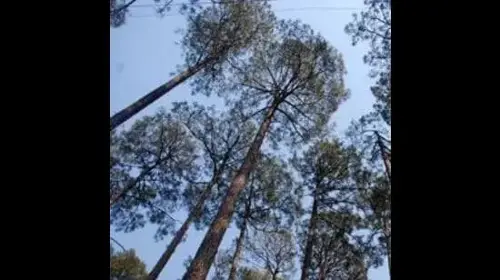
The Union environment ministry has made it easier for state-owned companies to meet their mandatory compensatory afforestation targets in a move aimed at removing bottlenecks in the implementation of large infrastructure projects that require diversion of forests.
In a clarification sent to states and UTs last month, the environment ministry clarified that Central government entities and captive coal blocks of state run companies implementing large projects that require diversion of forest land can take up compensatory afforestation on degraded forest land, and not necessarily non-forest land as previously stipulated.
While this will make things easier for the companies — non-forest land isn’t easily available — experts have pointed out that raising plantations on degraded forest land does not compensate for loss of forests.
The country’s green cover may be increasing according to the headline findings of the India State of Forest Report (ISFR) 2023 released in December , but the study also points to the degradation of large tracts of forests, increase in plantations and lack of clarity in status of so-called unclassed forests -- all of which could have serious impacts for biodiversity, forest dependent people and ecosystem services provided by old-growth forests.
According to the report, 40,709.28 sq km has seen degradation between 2011 and 2021, from very dense and moderately dense to open forests, and 5,573.02 sq km has seen degradation from very dense, moderately dense and open forests to scrub type. Most worryingly, 46,707.11 sq km has seen very dense,moderately dense , open, and scrub type forests degrading to non-forests.
According to the ministry’s clarification, degraded forest land where crown density of forests is below 40% can now be used for afforestation. The clarification says that the afforestation on degraded forest land, which do not have a natural or managed grassland for wildlife, will have to be on twice the area of forest land diverted.
Compensatory afforestation is an important requirement for prior approval of the Central Government for diversion of forest land for non-forest purposes and the purpose is to compensate for the loss of “land by land” and loss of “trees by trees”.
But there is a paucity of non-forest land for plantations.
To be sure, the Van (Sanrakshan and Samvardhan) Rules, 2023 and guidelines said that in exceptional circumstances when the suitable land required for compensatory afforestation is not available and the certificate to this effect is given by the state or UT, afforestation may be considered on degraded forest land twice in extent to the area proposed to be diverted.
The ministry has also clarified that non-forest land identified for compensatory afforestation is to be notified as Protected Forest before final approval (Stage-II) is granted by the Central Government. However, in cases where non-forest land identified has been transferred and mutated in favour of the State Forest Department (SFD), the Central Government may accord final approval for those also.
Another clarification says that states or UTs, having forest area more than 33% of their total geographical area can also authorise a suitable officer to issue certificate of non-availability of the suitable non-forest land for compensatory afforestation.
“The problem lies in the absence of clear criteria and transparency in defining what constitutes a degraded forest. Often, open natural ecosystems such as scrub forests and grasslands, which are vital natural landscapes, are converted into woodlands at the expense of local ecosystem services and endemic biodiversity. These plantations are undesirable as they often cause greater harm to ecosystems, including the extinction of wildlife, loss of livelihoods, losing carbon sinks, and even exacerbation of droughts, and soil degradation,” said Debadityo Sinha, Lead- Climate & Ecosystems, Vidhi Centre for Legal Policy.
